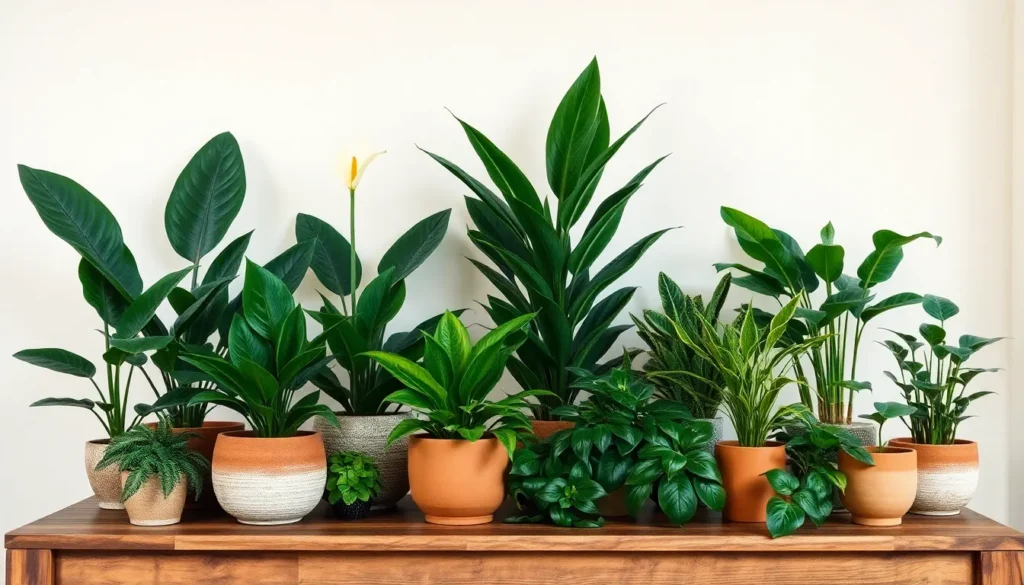In a world where we often find ourselves surrounded by hustle and bustle, creating a serene indoor sanctuary can provide a much-needed breath of fresh air—quite literally. Whether you’re just starting your plant parenting journey or have long cultivated a verdant indoor haven, understanding the impact of houseplants on air quality is a rewarding endeavor that benefits both mind and body.
Indoor plants do more than just beautify our spaces; they serve as natural air purifiers, diligently removing toxins and releasing oxygen. This article will guide you through a selection of ten remarkable indoor plants that not only thrive with minimal fuss but also significantly enhance the air quality in your home.
We’ll delve into the unique characteristics of each plant, offering practical tips on care requirements and placement to ensure they flourish. From the resilient snake plant to the lush peace lily, you’ll discover which plants best suit your lifestyle and how they can transform your living environment into a sanctuary of clean, fresh air.
Understanding Indoor Air Quality
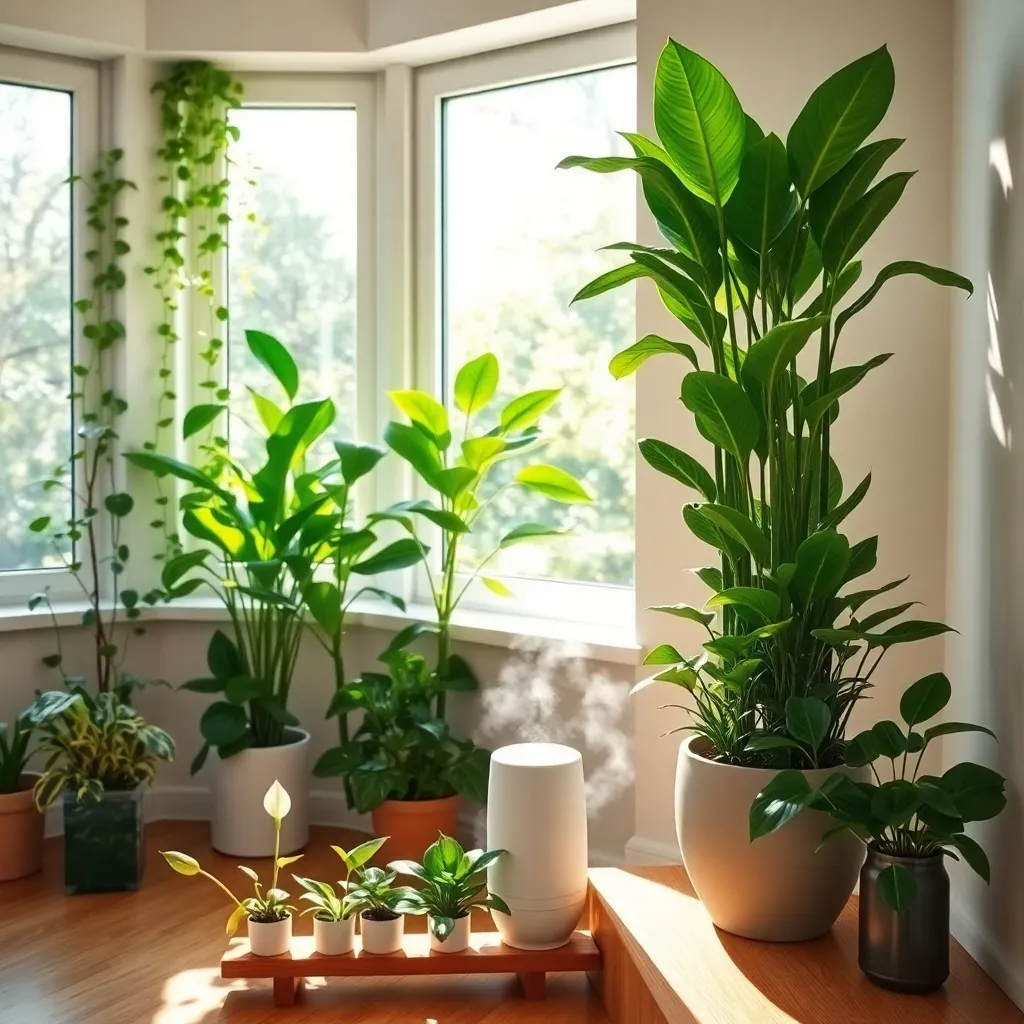
Indoor air quality is significantly influenced by the plants you choose to cultivate within your living spaces. By selecting plants that are known to improve air quality, you can create a healthier environment for both you and your family.
Beginners should start with hardy plants like the Snake Plant, which is known for its ability to filter toxins like formaldehyde. Ensure it receives indirect sunlight and water it only when the top inch of soil is dry to the touch.
For those looking to advance their indoor gardening skills, consider the Peace Lily. This plant requires a bit more attention, thriving in high humidity and needing its soil to be kept consistently moist but not soggy.
To further enhance air quality, group plants together as this increases humidity and reduces dust levels. Always use a good-quality potting mix to provide the right nutrients and drainage for your plants.
Benefits of Air-Purifying Plants
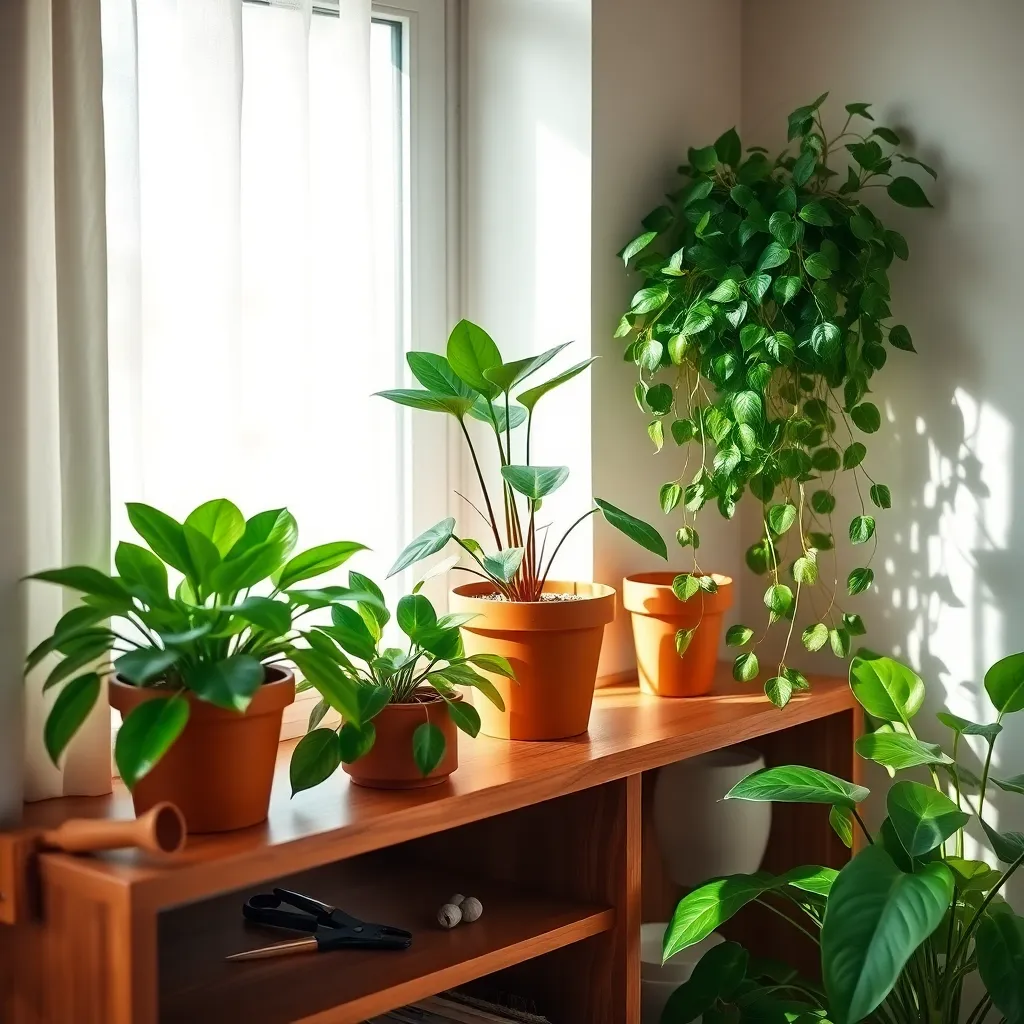
Adding air-purifying plants to your home can significantly enhance indoor air quality, making your living space healthier and more comfortable. These plants work by absorbing toxins and releasing oxygen, creating a fresher environment. For beginners, consider starting with easy-care plants like the Snake Plant or Spider Plant, which are known for their resilience and effectiveness in cleaning the air. These plants thrive in a variety of lighting conditions and require minimal maintenance, making them ideal for those new to gardening.
Advanced gardeners might want to explore the benefits of the Peace Lily, which is not only aesthetically pleasing but also excels at removing pollutants like ammonia, benzene, and formaldehyde. To keep Peace Lilies thriving, place them in indirect sunlight and water them weekly, ensuring the soil remains consistently moist but not waterlogged. Additionally, consider using a high-quality potting mix that drains well, and mist the leaves regularly to maintain humidity.
Another excellent choice is the Boston Fern, known for its ability to remove formaldehyde and other toxins while adding lush greenery to your space. To care for a Boston Fern, provide it with filtered light and maintain high humidity levels, which can be achieved by placing a tray of water near the plant or using a humidifier. Water the plant when the top inch of soil feels dry, and use a well-draining, peat-based soil mix to encourage healthy growth.
Beyond their air-purifying capabilities, these plants also offer psychological benefits, such as reducing stress and boosting mood. Incorporating a variety of these plants into your home not only creates a more vibrant and inviting atmosphere but also contributes to a cleaner, healthier indoor environment. Experiment with different types to find the perfect balance that suits your lifestyle and enhances your living space.
Choosing Effective Plant Varieties
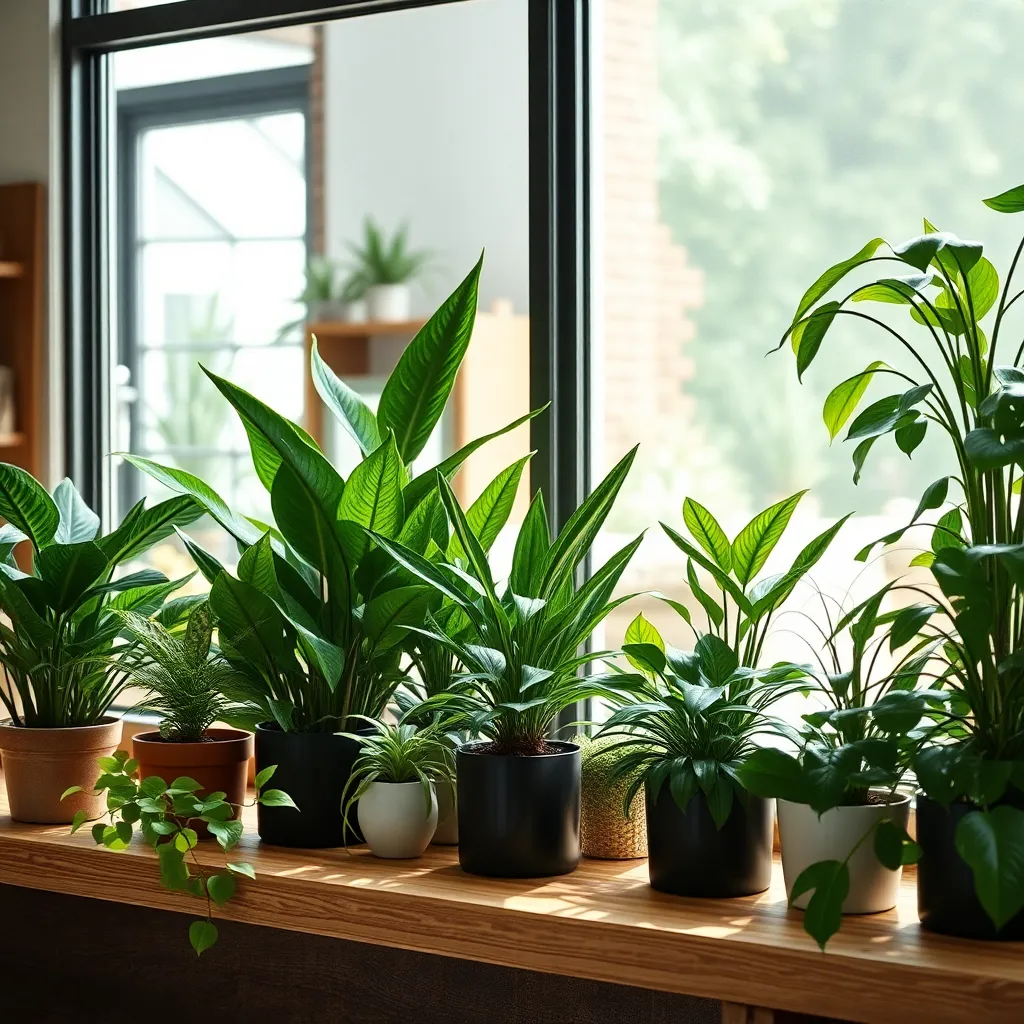
Choosing the right plant varieties can significantly enhance the air quality of your indoor spaces. To maximize their air-purifying benefits, select plants that are known for their ability to filter out common toxins such as formaldehyde, benzene, and trichloroethylene.
Consider the lighting conditions in your home when selecting plants, as this will affect their growth and air-purifying abilities. For low-light areas, consider plants like the Snake Plant (Sansevieria) or Peace Lily (Spathiphyllum), which thrive with minimal sunlight.
Both beginners and experienced gardeners can benefit from understanding the specific care needs of each plant. For instance, the Spider Plant (Chlorophytum comosum) requires well-draining soil and should be watered once the top inch of soil feels dry, making it ideal for those new to gardening.
For more advanced gardeners, experimenting with a variety of plant species can be rewarding. Consider integrating plants with different leaf shapes and sizes, such as the Boston Fern (Nephrolepis exaltata), which prefers high humidity and indirect light for optimal growth and air purification.
Spider Plant: A Natural Purifier
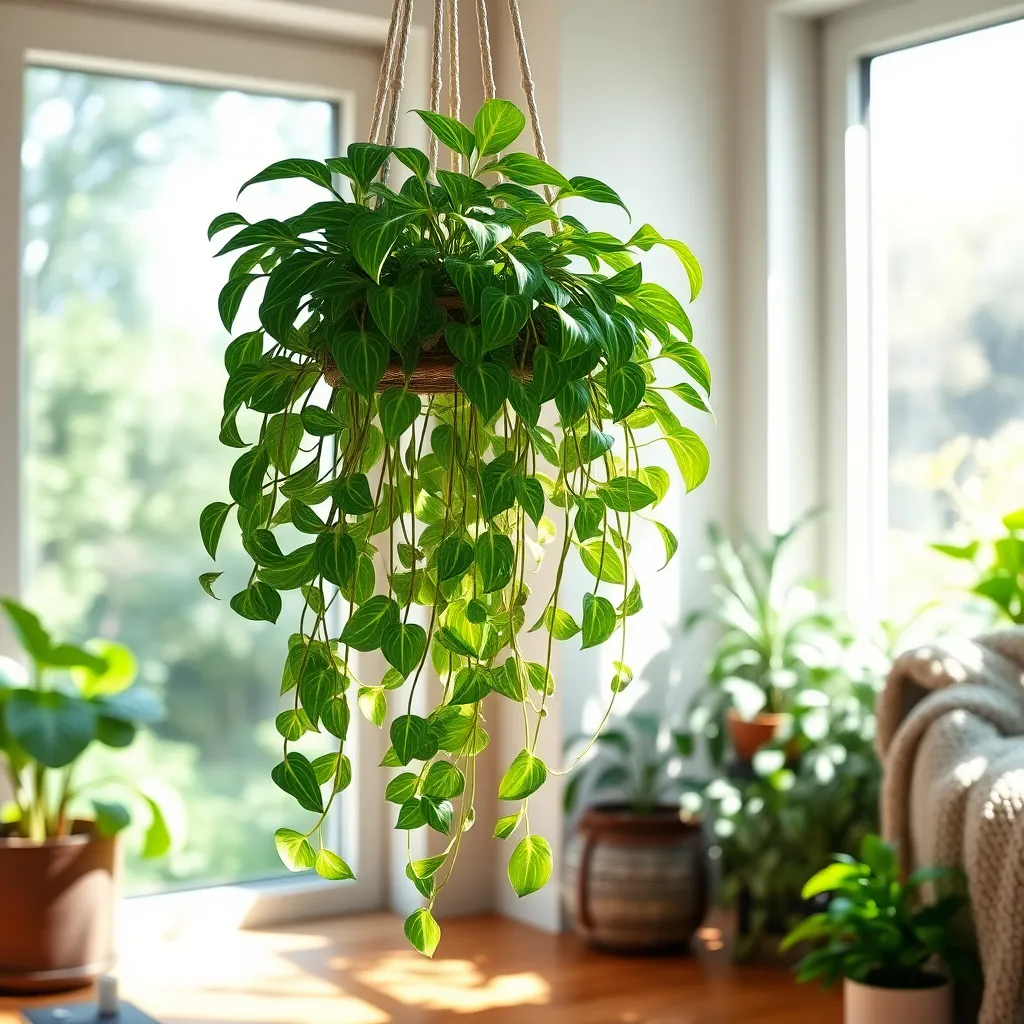
The Spider Plant, known for its lush, arching leaves and ease of care, is a fantastic choice for improving indoor air quality. This plant is especially effective in removing pollutants like formaldehyde and xylene, making it an excellent natural purifier for your home.
When caring for a Spider Plant, ensure it is placed in indirect sunlight to thrive. Overexposure to direct sunlight can scorch its leaves, so a spot near a bright window with filtered light is ideal.
Water your Spider Plant when the top inch of the soil feels dry to the touch, usually every 1-2 weeks. Use a well-draining potting mix to prevent root rot, and consider a pot with drainage holes for optimal results.
For those looking to expand their collection, Spider Plants readily produce offshoots, or ‘pups,’ that can be easily propagated. Simply place these pups in water until they develop roots, then plant them in soil for a new vibrant addition to your indoor garden.
Peace Lily: Toxin Absorber
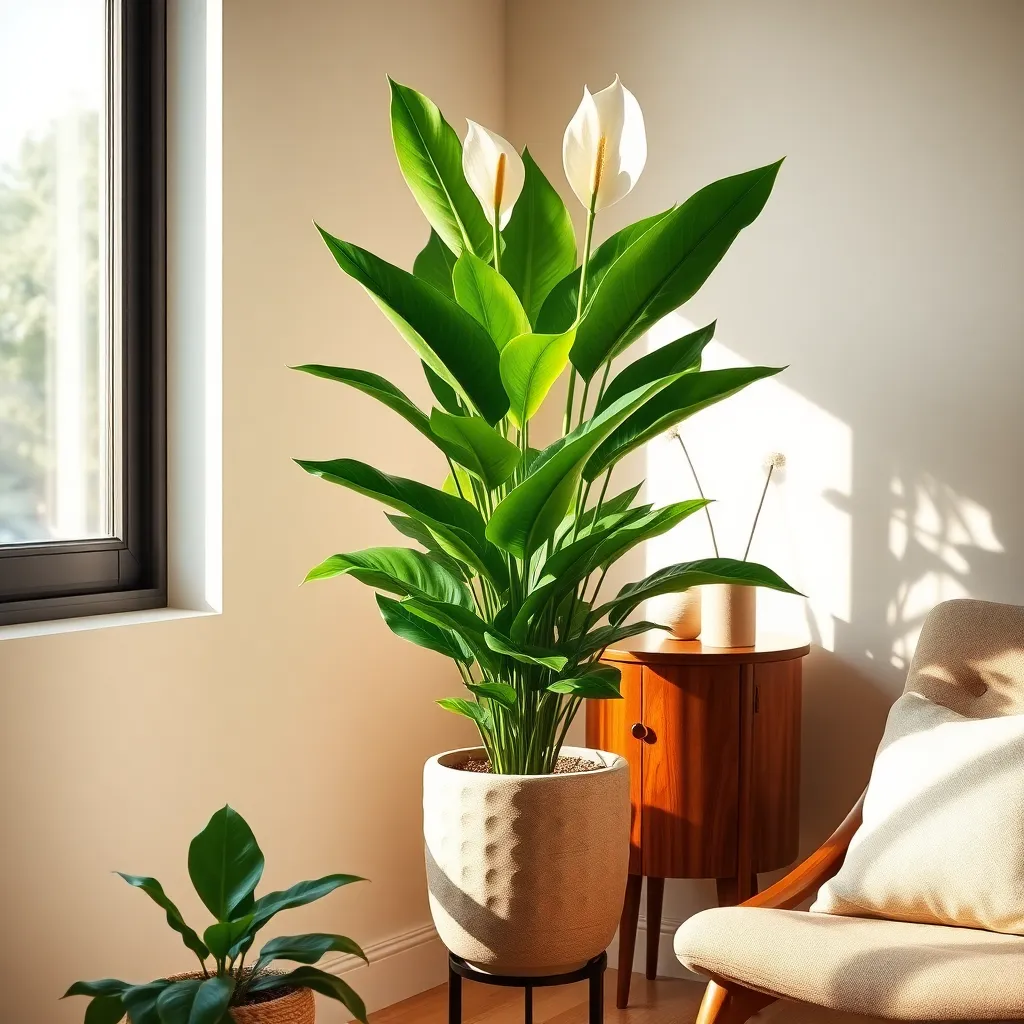
The Peace Lily is not only a beautiful addition to your home but also a powerful ally in improving air quality. Known for its ability to absorb toxins like benzene, formaldehyde, and ammonia, this plant is a must-have for any indoor space.
Place your Peace Lily in a spot with indirect sunlight to keep it thriving. While these plants can tolerate low light, providing bright, filtered light can help them produce more blooms.
Water your Peace Lily when the top inch of soil feels dry, ensuring that it remains consistently moist but not waterlogged. Using a pot with drainage holes and a well-draining soil mix, such as a peat-based potting soil, can prevent root rot.
For advanced care, consider misting the leaves regularly to maintain the high humidity levels that Peace Lilies love. Additionally, fertilize once a month during the growing season with a balanced houseplant fertilizer to promote lush growth.
Boston Fern: Humidity Enhancer
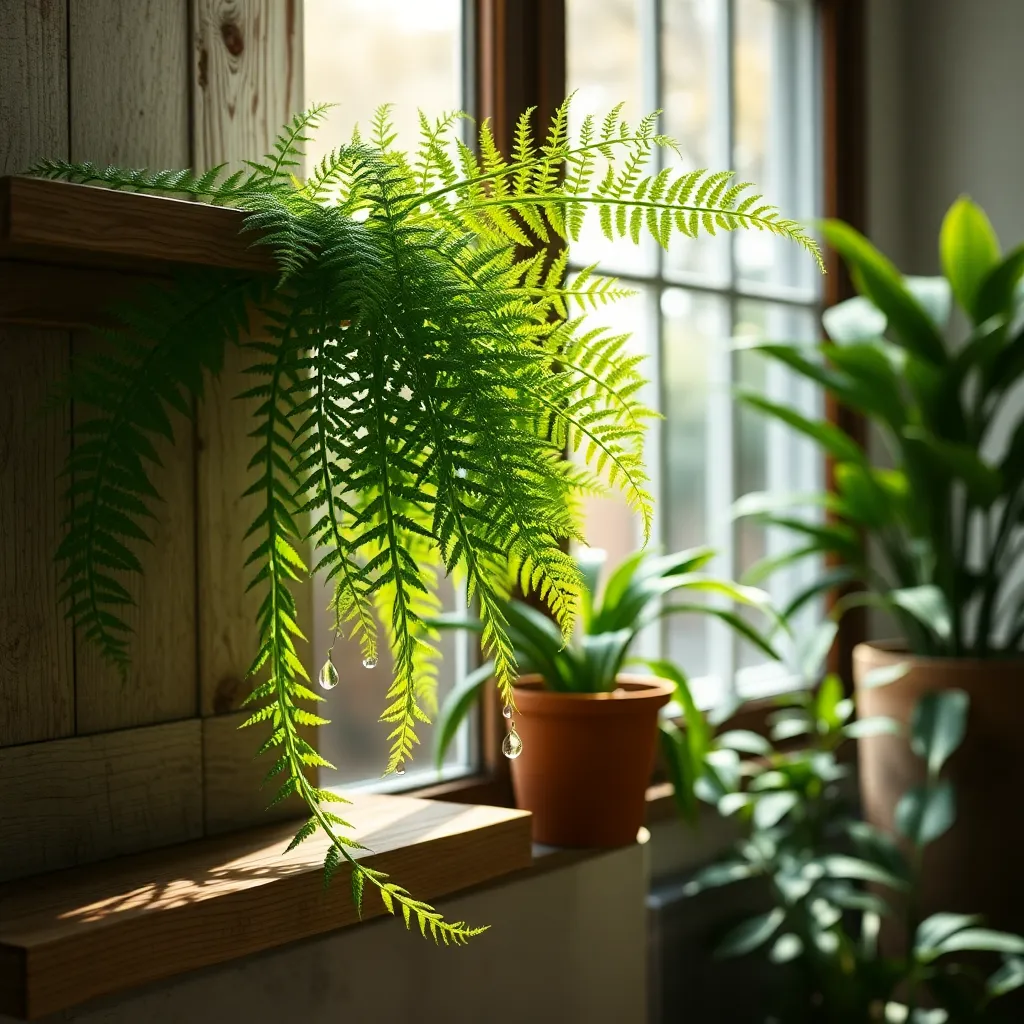
The Boston Fern is an excellent choice for improving indoor air quality due to its ability to increase humidity levels and remove toxins. Known for its lush, full fronds, this plant thrives in a variety of indoor environments, making it accessible for gardeners of all skill levels.
To keep your Boston Fern flourishing, ensure it is placed in a spot with indirect sunlight. Bright, filtered light is ideal, but it can also tolerate lower light conditions, making it versatile for various indoor spaces.
Humidity is crucial for the Boston Fern’s health, so aim to maintain a room humidity level of 50% or higher. Regular misting and placing a humidifier nearby can help achieve the necessary moisture levels, particularly in drier climates or during winter months.
Watering requires a delicate balance; the soil should be kept consistently moist but not soggy. Use a potting mix that retains moisture yet drains well, such as one containing peat moss or perlite, to support the fern’s needs.
For those looking to enhance growth, consider adding a diluted liquid fertilizer every month during the growing season. This will provide essential nutrients and keep your Boston Fern looking lush and vibrant all year long.
Snake Plant: Oxygen Generator
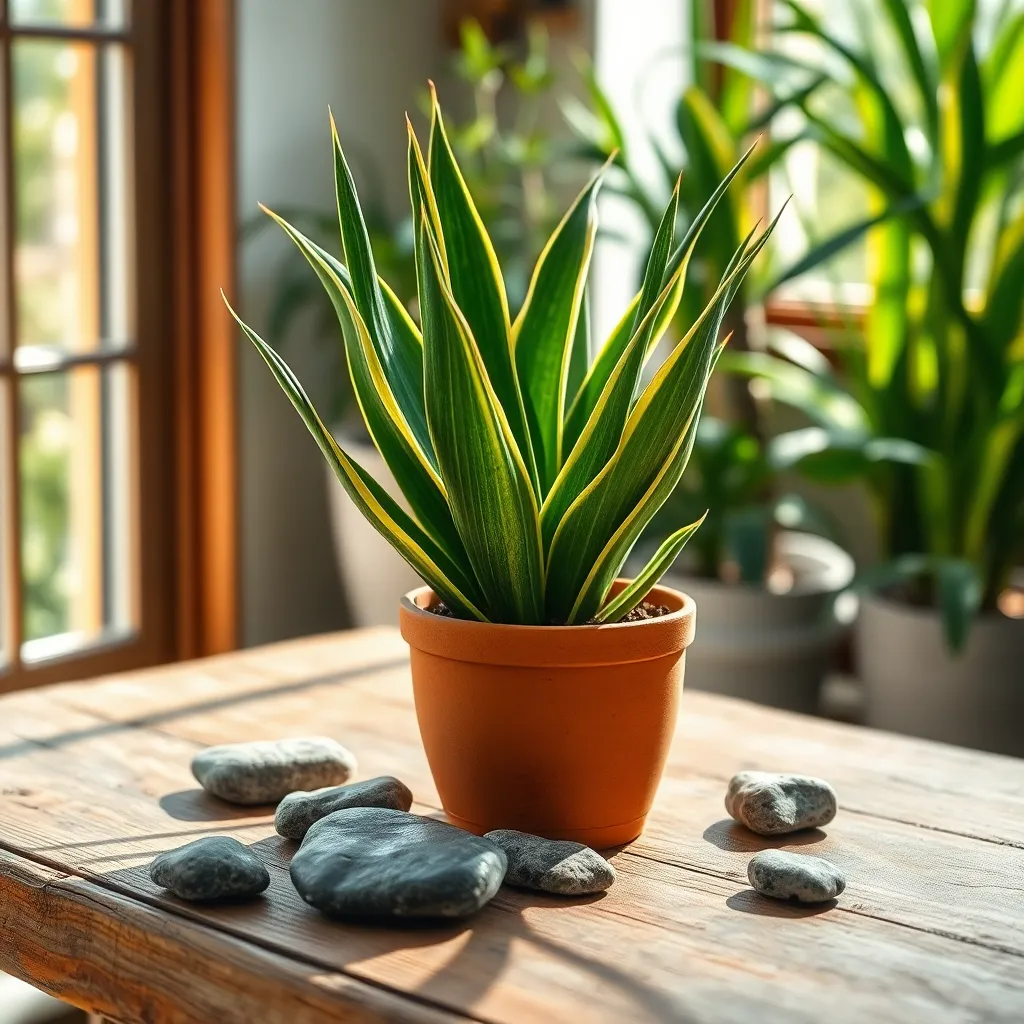
Known for its ability to improve air quality, the Snake Plant is a robust choice for indoor gardening enthusiasts. This resilient plant is highly effective at converting CO2 into oxygen, making it a great addition to your home, especially in bedrooms or living rooms.
To ensure the Snake Plant thrives, place it in a spot with indirect sunlight. While it can tolerate low light conditions, providing bright, indirect light will promote more vibrant growth.
Watering the Snake Plant is straightforward—allow the soil to dry out completely between waterings. Overwatering is a common mistake; therefore, using a well-draining potting mix, such as a blend of cactus soil and perlite, is recommended to prevent root rot.
For those looking to optimize growth, fertilize your Snake Plant during the growing season with a balanced houseplant fertilizer every couple of months. Additionally, gently wipe the leaves with a damp cloth to remove dust, ensuring the plant can photosynthesize efficiently.
Aloe Vera: Versatile Air Cleaner
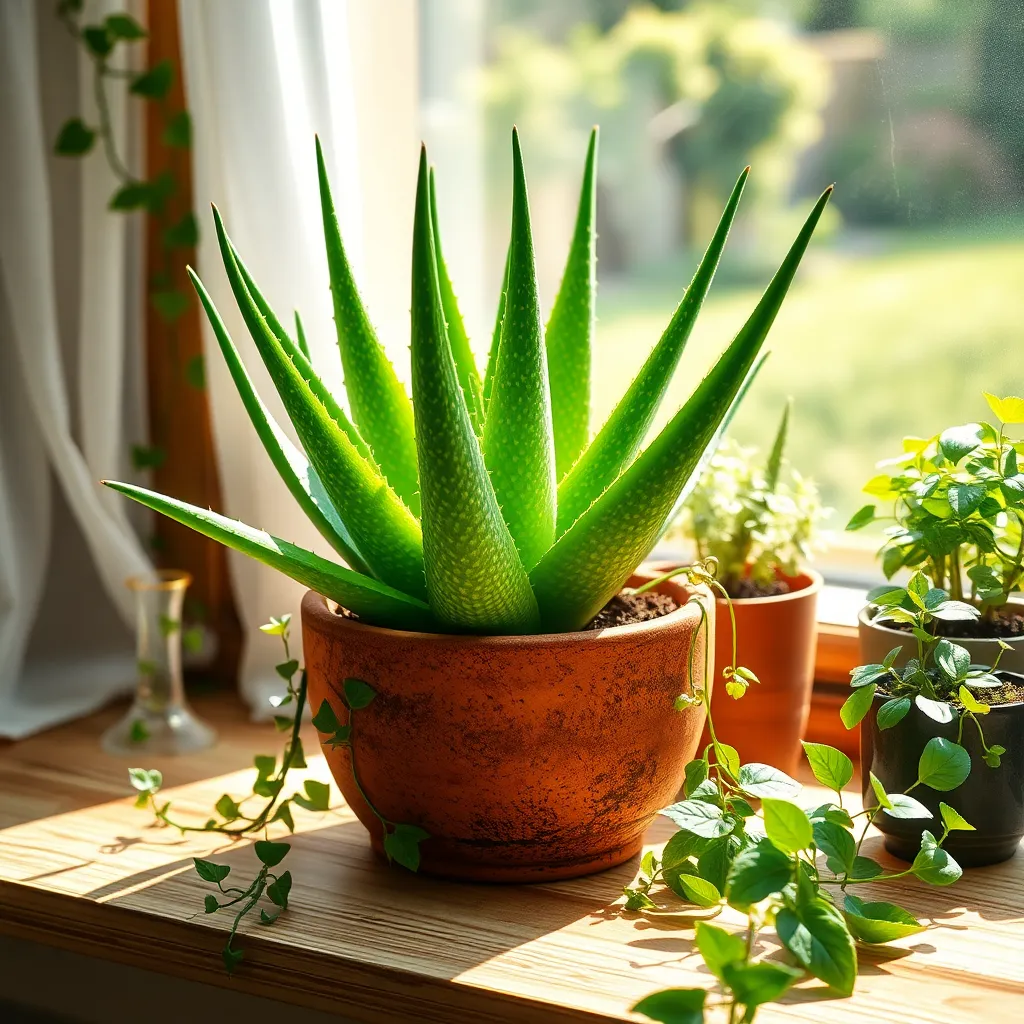
Aloe Vera is not only known for its soothing properties but also for its ability to purify the air. This hardy plant is excellent at removing harmful pollutants like formaldehyde and benzene, making it a valuable addition to any indoor garden.
For best results, place your Aloe Vera in a sunny spot as it thrives in bright, indirect light. If you’re a beginner, don’t worry—this plant is forgiving and can tolerate some level of neglect, making it perfect for those new to gardening.
Use a well-draining potting mix such as a cactus or succulent blend to ensure the roots do not become waterlogged. Water your Aloe Vera sparingly; allow the soil to dry completely between waterings to prevent root rot.
For advanced gardeners looking to boost their plant’s growth, consider fertilizing once a month during the growing season with a balanced, water-soluble houseplant fertilizer. By following these simple care tips, your Aloe Vera will not only thrive but also work tirelessly to keep your indoor air fresher and cleaner.
Areca Palm: Pollutant Eliminator
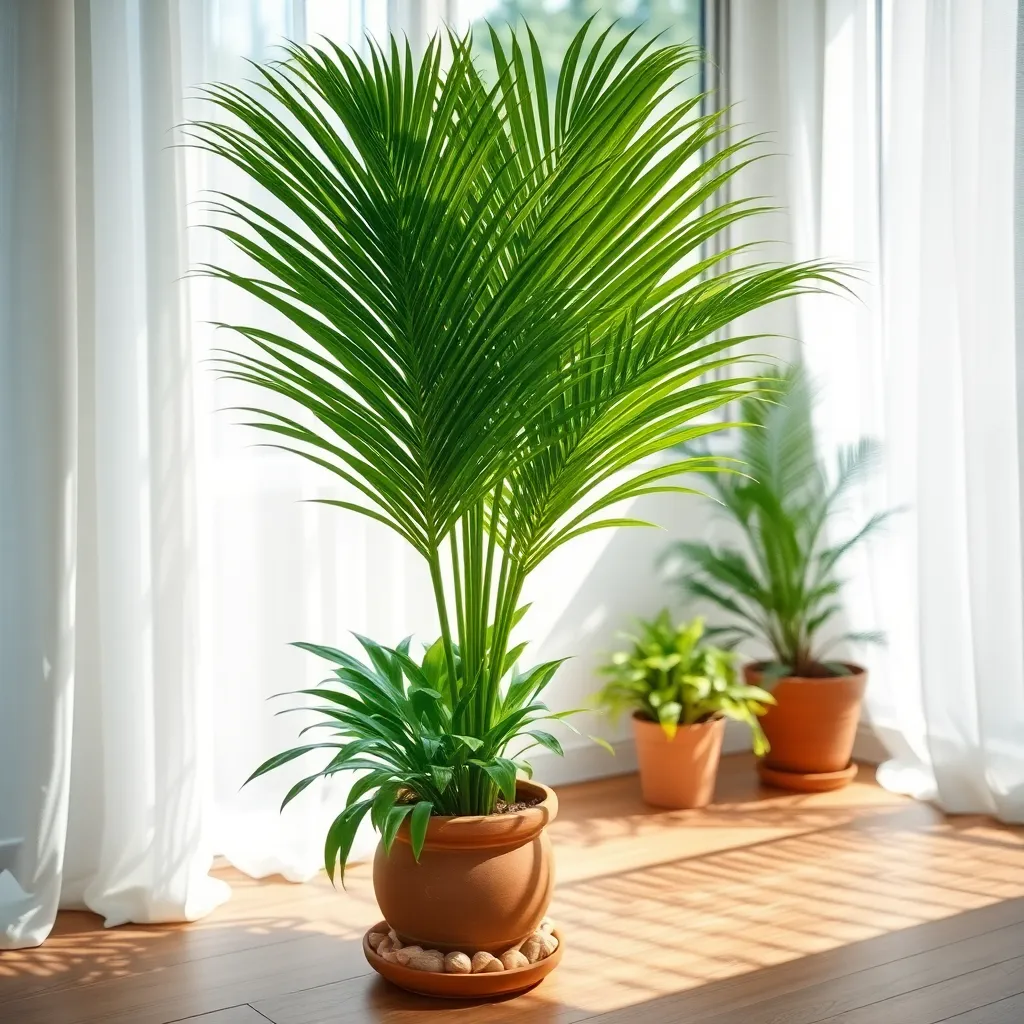
The Areca Palm is renowned for its ability to eliminate pollutants, making it a stellar addition to any indoor space. Known for removing toxins like formaldehyde, xylene, and toluene from the air, this plant not only enhances the aesthetic of your home but also promotes a healthier environment.
Position the Areca Palm in a location where it can receive bright, indirect sunlight to thrive. It is crucial to water your palm when the top inch of soil feels dry, ensuring you maintain a balance that prevents both over-watering and dehydration.
For optimal growth, plant your Areca Palm in a well-draining peat-based soil mix to provide the necessary nutrients and prevent root rot. A monthly feeding with a balanced liquid fertilizer during the growing season can boost its health and maintain vibrant foliage.
Advanced gardeners might consider repotting the Areca Palm every couple of years. This practice not only provides fresh soil but also gives the roots more room to expand, helping the plant maintain its pollutant-eliminating prowess.
Caring for Your Indoor Plants
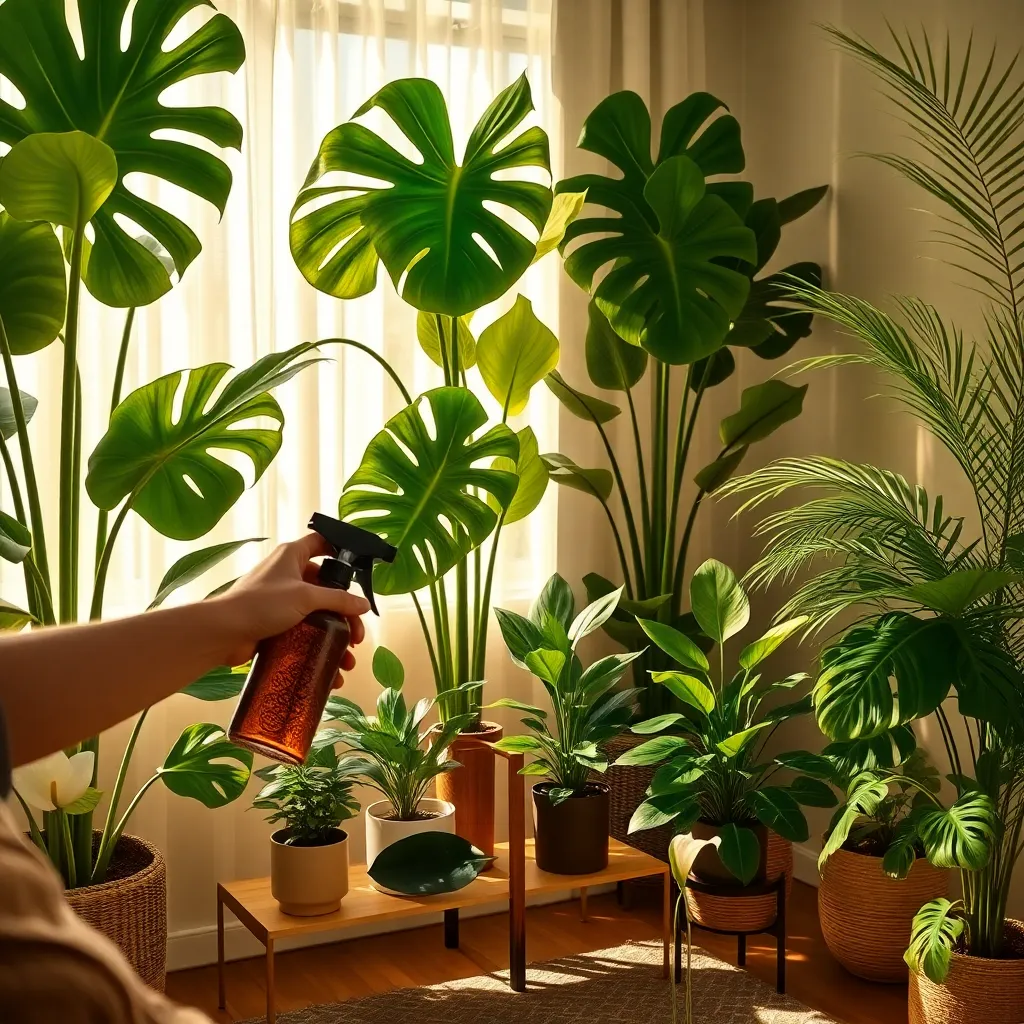
Indoor plants not only beautify your space but also require attention to thrive. Understanding the specific needs of your plants is crucial for maintaining their health and maximizing their air-purifying benefits.
Start by considering the light requirements of each plant. Many indoor varieties like the Areca Palm prefer bright, indirect sunlight, so placing them near an east or north-facing window is ideal.
Watering is another critical aspect of plant care, and it’s important to strike a balance. Overwatering is a common mistake; ensure the top inch of soil is dry before watering again to prevent root rot.
Soil quality can greatly influence plant health. Use a well-draining potting mix designed for indoor plants, and consider adding perlite or sand to improve drainage if needed.
Feeding your plants with the right nutrients is essential for their growth. A balanced liquid fertilizer applied every month during the growing season will help keep your plants vigorous and lush.
For those looking to go a step further, consider humidity levels, especially for tropical plants like the Areca Palm. Using a humidifier or placing a tray of water near your plants can help maintain the humidity they crave.
Pruning and cleaning the leaves can also enhance plant health. Regularly remove dead or yellowing leaves and gently wipe dust from the foliage to allow the plant to photosynthesize effectively.
Conclusion: Growing Success with These Plants
In exploring the world of indoor plants, we’ve uncovered ten remarkable green companions that do wonders for air quality and, metaphorically, for nurturing relationships. From the resilient Spider Plant, symbolizing adaptability, to the calming Lavender, representing tranquility, each plant mirrors vital relationship traits like trust, patience, and growth. The Aloe Vera’s healing powers remind us to tend to wounds, while the Peace Lily’s purification abilities urge us to cleanse negativity. Just as the Snake Plant thrives with minimal care, so too can relationships flourish with consistent, thoughtful attention.
Now, let’s take a tangible step toward enhancing both your environment and your connections: choose one plant from our list to bring into your home today. As you care for it, reflect on the qualities it embodies and how they relate to your relationships.
Bookmark this article to revisit these insights and plant care tips whenever you need a refresher. As you cultivate these relationships—both with your plants and loved ones—you’re paving the way for a thriving, harmonious future. Remember, nurturing relationships is an ongoing journey, and each small step leads to lasting success and joy.

